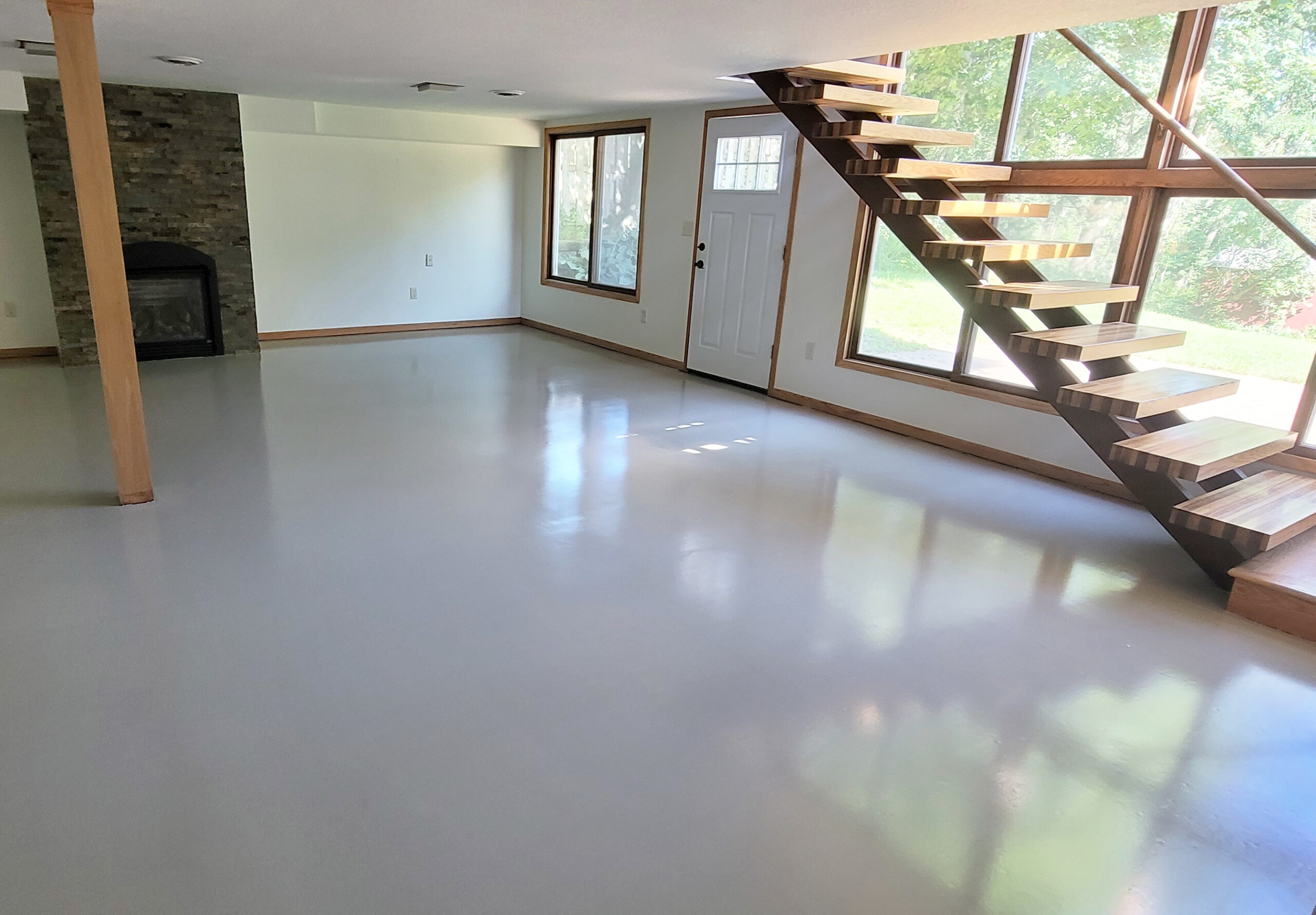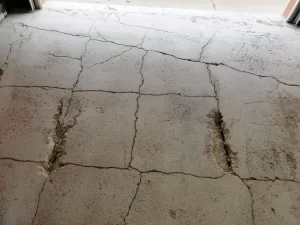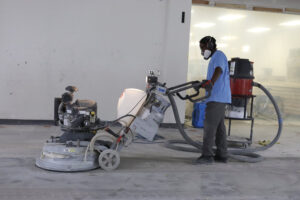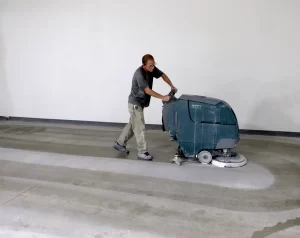One of the fastest growing trends in flooring is epoxy coatings. There are many ways to create a custom floor using epoxy, some techniques can even mimic the look of natural wood. By combining colorful pigments, glittery metallics, and cementitious building materials, you can achieve almost any aesthetic. Liquid applied epoxy floor coatings are not only stylish, but they are incredibly easy to care for. Since the surface of an epoxy floor is seamless, and forms a perfect seal, cleanup is a snap. You can use simple neutral cleaners like window spray or ammonia and warm water to handle spills.
This all sounds wonderful, so what are the drawbacks of epoxy flooring? Ultraviolet rays present in sunlight can cause a chemical reaction within the epoxy resin that causes it to take on an amber hue over time. This ambering does not cause any structural issues, but it can significantly change the appearance of your floor long after the installation. For this reason, it’s best to use epoxy in environments that do not receive large amounts of direct sunlight.
Epoxy takes longer to cure, and does not have the same level of adhesion that other liquid applied polyaspartic coatings have. Epoxy floor coatings take anywhere from twelve to eighteen hours to cure enough to walk on, and can take up to three days to fully cure. This means extra wait time before you can use your space, and more chances for foreign particles such as leaves or dust to stick to the surface. The work space will need to be sealed off for the duration of the curing process to ensure the best possible end product. Preparation of the concrete may also take longer to ensure that the epoxy will adhere to it when it is rolled out. If the surface of the slab is not adequately prepared, the epoxy coating may not hold fast and will be prone to premature wear.
So what are the alternatives to epoxy? Urethanes and polyureas are fantastic choices for floor coatings. Urethane coatings are significantly more flexible than epoxy. This means that a urethane or polyurea coating can handle a reasonable amount of shifting of the concrete. Most urethanes and polyurea coatings are also UV stable. You can apply a urethane or polyurea coating to outdoor concrete with little worry of ambering or sun fading. Another advantage of urethane and polyurea coatings is the durability of the product. Polyurea coatings can be up to ten times stronger than epoxy coatings, and far more resistant to scratching and chipping. On top of that, the cure time for urethane and polyurea coatings is significantly shorter than epoxy; often being ready to use within twenty four hours. Urethane and polyurea coatings are excellent alternatives to epoxy that will serve well for both indoor and outdoor flooring.
What if you need something stronger, perhaps for a high traffic commercial setting? Methyl Methacrylate, commonly referred to as “MMA” is a perfect material for heavy traffic industrial applications. MMA can be used to get a similar aesthetic to epoxy, urethane, or polyurea coatings while lending a significant amount of strength to the mix. Most MMA systems include a base primer, self leveling slurry coating (to suspend flake or quartz additives), grout locking coating, and clear top coating. The chemical bond that is formed by the methacrylate within the applied layers becomes a single, impervious monolithic flooring system. MMA is particularly good for high traffic areas as it will not easily wear down from heavy use.
A major advantage of using MMA flooring is that it is FDA and USDA compliant. This means that if you’re looking for flooring appropriate for food production or service, MMA is your best option. It can also be very costly to stop production in your facility to accommodate for installation, as every second counts. The one hour cure time of MMA will have you back up and running right away. No need to worry about maintenance either; methyl methacrylate can stand up to a wide array of cleaning chemicals, and can be cleaned easily with a hose, mop, or squeegee.
As you can see, there is a wide variety of flooring options that, though similar, have very different properties. Residential and commercial settings will often have vast differences in their respective flooring needs. Reducing the question down to “which is better/stronger/cheaper” won’t always guide you to the best solution for your needs. It’s always a good idea to consult a professional when considering what flooring solution will work best for your space.





